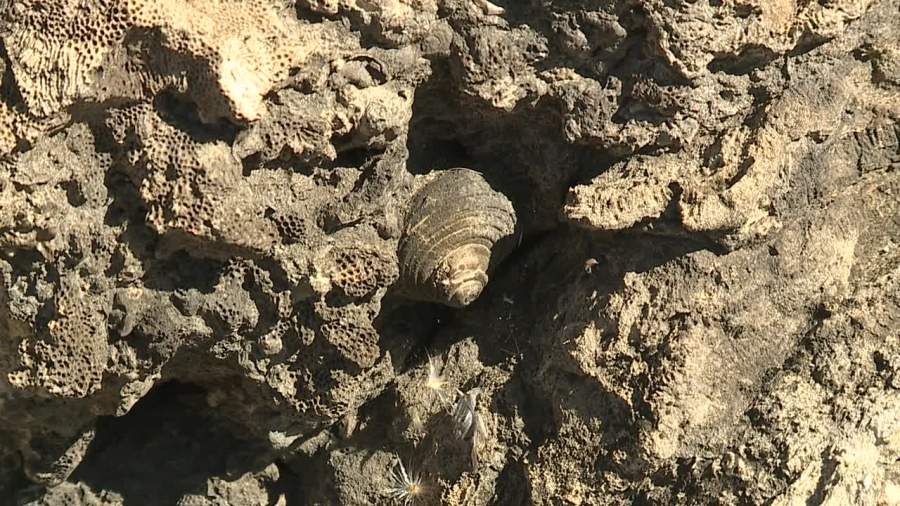IWILEI, Hawaii (KHON2) — In the middle of Iwilei, on the corner of Dillingham Blvd and Akepo Lane, lays an ancient rock covered in fossils typically seen near the ocean.
Experts said the rock was actually a reef, and the area was once the shoreline.
“It’s fossiliferous limestone,” explained Chip Fletcher, UH Manoa interim dean of the School of Ocean and Earth Science and Technology. “It has coral fossils, it has mollusk fossils, it is a reef and it is a shoreline, essentially.”
He said this ancient shoreline stretches as far as the H1 freeway near Manoa and this type of rock can also be found in Kailua and Kaena Point.
“Nominally, the ocean was ten feet higher than that actual rock,” explained Fletcher.
Last week, a Honolulu city council member highlighted the often-overlooked site and did his own research. He found geologists wrote about this reef back in the 30s.
“I also spoke with some professors right now at the University of Hawaii who confirm this is likely from 120,000 years ago when the sea level was much higher,” councilmember Tyler Dos Santos-Tam said.
Experts said the earth experienced a warm period 125,000 years ago and sea levels were significantly higher due to melting ice sheets, but some say temperatures today are just as warm as they were back then but for un-natural reasons.
“This is called an interglacial cycle, and studying the most recent one, the youngest one, the Eemian period, you’ll find the most well-preserved geologic records of the environment and what we learned there, we apply to here,” explained Fletcher.
He said over the last 500,000 years, the sea level has gone up and down five times.
“And when it goes down, it’s an Ice Age, a global Ice Age, which pulls water out of the ocean and builds these giant glaciers on the continents,” he explained. “And when sea level goes up, it’s a warm period, and we are currently living in one of those warm periods, and sea level is relatively high.”
“So 125,000 years ago we were in an interglacial period [Eemian], and then sea level came down to the last ice age about 20,000 years ago, and then it began rising into what’s called the Holocene, which is the last 10,000 years of Earth’s history,” Fletcher continued. “And it’s the beginning of the Holocene that humans evolved from hunter-gatherer societies into agrarian societies, we deforested large areas, we began growing food, we settled in towns and villages, so the big question is are we still in the Holocene? Or have we moved into the Anthropocene?”
He said the Anthropocene period is considered a recent period where humans have had a dramatic impact on Earth’s climate. “Climate change, biodiversity loss, pollution, all of these things have taken place in the last 150 years in an accelerated fashion,” he added.
He added these ancient rocks are geologic records of the past, “and it’s what geologists study to learn about the past. By learning about the past natural climate change, we know that today’s climate change is not natural,” Fletcher said.
“If we wait 1,000 years, sea level will be that high again, because that’s how long it takes for the great ice sheets in Greenland and Antarctica to melt,” he continued.
But the glimpse of ancient history will be short-lived.
Check out more news from around Hawaii
In a statement, the Honolulu Authority for Rapid Transportation said “A portion of the rock was removed to make way for the installation of new underground ducts and to clear the site for a future guideway column. Portions of the existing rock will be also be removed in the future during road and sidewalk restoration.”
“There’s so much below the ground surface here on Oahu that we might not know about, so it’s a good opportunity to be reminded there are near things everywhere,” Dos Santos-Tam said.
